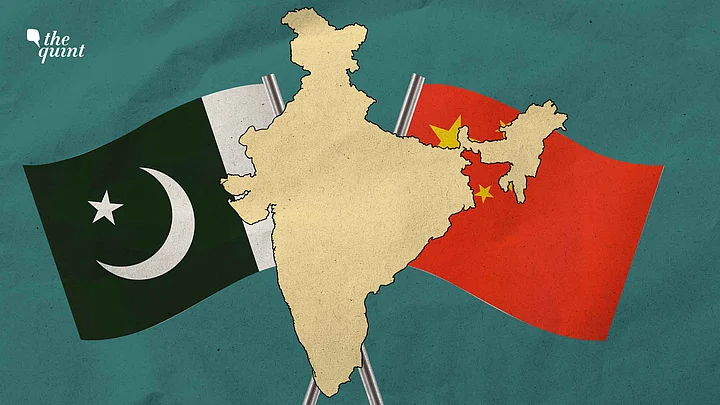As tensions between India and Pakistan de-escalate, a quote attributed to Neville Chamberlain comes to mind: “In war, whichever side may call itself the victor, there are no winners, but all are losers.”
Once again, old nemesis India and Pakistan were caught in a bitter brawl when Indian jets took to the skies on 7 May 2025 in response to a terror attack against innocent Indian civilians in Jammu and Kashmir's Pahalgam. South Asia and the world held its breath because of the rising tensions between two nuclear states, as jets roared, missiles flew with soldiers and navies put on high alert.
Nations watched nervously, fearing a long war along the lines of the Russia–Ukraine, now in its fourth year. But while New Delhi and Islamabad fought over historic issues—Pakistan-sponsored terrorism and the status of Jammu and Kashmir—someone else perhaps quietly walked away with the rewards.
That someone was China.
A Hard Pill to Swallow
Without firing a single shot, Beijing managed to turn the regional conflict into a success for its military, defence sales, and global prestige.
With the declaration of a US-'brokered' ceasefire, both India and Pakistan emerged as losers, to some extent or another—economically, diplomatically, and militarily. China, however, has emerged with its prestige enhanced. It has sold efficient weapons, tightened its grip on Pakistan, showed its influence in supporting Pakistan at the United Nations and kept India distracted and cornered without engaging directly.
For India, the smartest response to consider might now also feel like the hardest: to open a quiet and considered dialogue with China.
Yes, the memory of Chinese intrusions into Indian territory and the deaths in Galwan on 15 June 2020 still burns in Indian minds. And yes, India’s nationalists will remonstrate strongly. But pragmatism often demands swallowing a bitter pill. Mending fences to the extent possible with Beijing will not mean trust. It will certainly take goodwill on both sides along with a pragmatic approach.
The reported recent talks between India’s National Security Adviser and Chinese Foreign Minister is a positive sign. A considerable de-escalation along the Himalayan Lines of Actual Control could loosen the combined, twin-front chokehold of Pakistan and China, giving India room to readjust its focus.
This is significant at a time when US President Donald Trump’s ‘America First 2.0’ has left its traditional allies unsure of his administration’s strategic intentions.
Free Advertising for China
In the India-Pakistan air battle, China never had to show up at all. Pakistan did the heavy lifting—with JF-17 jets, PL-15 missiles, LY-80 defenses, all branded with “Made in China" stamps. This encounter was a golden opportunity for Beijing to test its weapons under actual combat conditions, gather valuable data, and fine-tune its designs.
This was like a free commercial for Chinese technology and weapons. And buyers noticed.
From Africa to Southeast Asia, defence chiefs would have noted the JF-17s’ combat performance and taken due note. As efficient, if not better, than the West-made competition, and at a third or fifth of the price. Shares of AVIC Chengdu, maker of the J-10C, skyrocketed 36 percent in just two days while Dassault, the French maker of India’s pricey Rafales, watched its share price tumble.
But for Beijing, weapons are not only about sales. They are about creating dependencies and an eco-system.
Every Pakistani jet, missile, or radar station, now ties Islamabad ever tighter to the Chinese supply chains—spare parts, training, upgrades.
This clash has deepened Pakistan’s slide from client to satellite or vassal state status. From China, the message was clear: Want a dependable ally and affordable, battle-proven weapons? Come to Beijing. What wasn’t said was, “And once you do, there is no getting free of the dependency.”
While India scrambled to manage the fighting, China coolly kept its troops well out of sight along the nebulous Line of Actual Control. No escalation, no second front. Instead, Beijing used its status as a veto-holding permanent member of the UN Security Council to dilute any attempt to blame Pakistan for sponsoring terror attacks against India.
At the same time, China flexed its growing power in the arms market and at the trade table, nudging the US toward securing concessions in Geneva.
Left in the Bleachers
And India? Left waiting for international support that came only in endorsements of action against terror from Russia, France, and Israel. As Kashmir quietens—for now—China’s win is undeniable. It will sell more weapons, has tightened its grip on Pakistan, expanded its influence at the UN, and kept India distracted, all without any direct intervention.
Meanwhile, its AI-driven war games, data collection, and narrative manipulation hummed along in the background with psych-ops shaping perceptions before anyone even realised what was happening.
For India, the options are not facile.
It can double down on old strategies. Or it can play the long game of cautiously engaging Beijing, cooling down the Himalayan confrontation, and open the space to reset its alliances and boost the economy.
India has consistently refused third party intervention in our dealings with Pakistan—might China and/or the US use this brief conflict to muscle their way in?
Once it becomes a player in subcontinental geopolitics, it will be hard to eliminate American involvement. Perhaps it might insist on a roll-back of putting the Indus Waters Treaty, presently in abeyance.
This will mean nationalistic pride taking a blow, for which there may be a price to pay by the current political leadership, given India’s democratic polity, before it can focus on long-term hard realism.
On this obscure chessboard of shadows and misinformation, China seems already a few moves ahead. The question is, would India smell the coffee and do what it takes to mount a challenge to China’s growing influence in our region?
(Krishnan Srinivasan is a former foreign secretary of India; Manoj Mohanka follows Sino India Pakistan geopolitics closely and serves on corporate boards. This is an opinion piece and the views expressed above are the author’s own. The Quint neither endorses nor is responsible for the same.)
